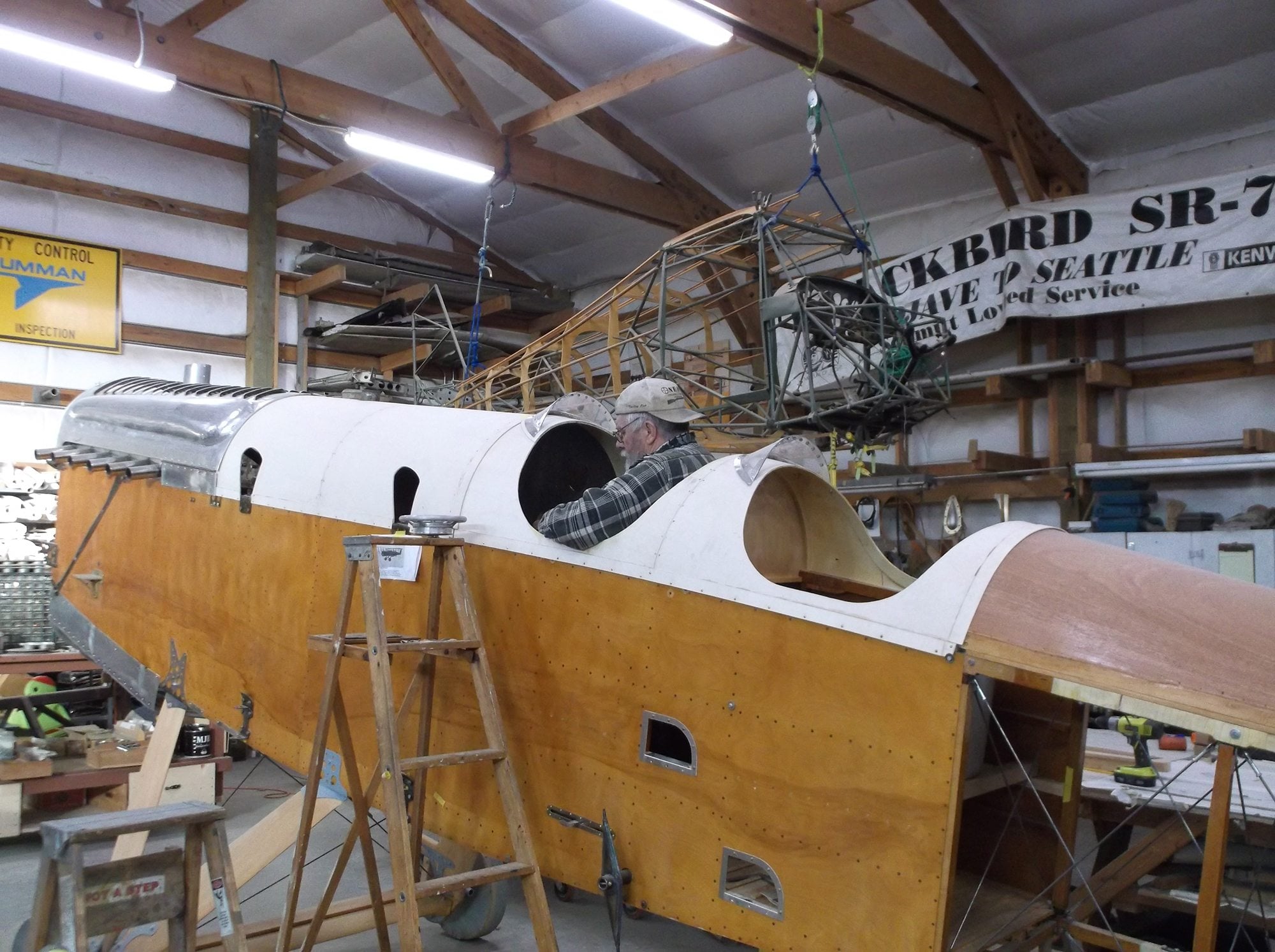Army aviators based at Vancouver Barracks in the 1920s made some flights just to create headlines and raise the profile of military aviation.
That included flying over the annual “Civil War” football game between the University of Oregon and Oregon State, and dropping the game ball from an airplane, said Bob Cromwell, manager of Pearson Air Museum in Vancouver.
In August, one of those aircraft is going to generate excitement at Pearson just by arriving. It’s a DH-4 Liberty that was purchased for Pearson Air Museum by the National Park Service.
The De Havilland biplane is being restored by Century Aviation in East Wenatchee.
“The plane is due in Vancouver by Aug. 12,” said Karen Barrow, who operates Century Aviation with business partner Mark Smith. “But Mark and I expect to deliver it the first week in August.”
Did You Know?
• British engineer Geoffrey De Havilland designed the DH-4 as a light bomber. When the United States entered World War I, military officials looked for the easiest Allied design to mass produce.
• The U.S. built more than 4,800 DH-4 Liberties from 1917 to 1923. (The name came from its 400-horsepower Liberty V-12 engine.) They were flown by the U.S. military until 1932.
• Return trip: A portion of Pearson Air Museum sits on the site of the Army’s World War I cut-up mill, which produced spruce components for American DH-4 Liberty planes. There’s a good chance that some of the wood in the DH-4 that is being restored for the museum was milled at Vancouver Barracks almost a century ago.
The De Havilland will provide a focal point for the museum to explore the golden age of aviation. Cromwell, who also is acting chief ranger at Fort Vancouver National Historic Site, calls it “a key aircraft when discussing the early Army aviation period at Pearson Field in the 1920s.”
(It won’t be flyable, by the way; the plane is strictly for display purposes.)
The plane is being assembled with a variety of components. When Century Aviation took on the project, the DH-4’s condition definitely could be described as “some assembly required.”
“Everything is pretty disconnected,” Barrow said last week.
They don’t have any assembly of parts large enough to be considered one original aircraft, she said. There are some complete sections, however. It has an intact original tail section: the rudder and two elevators, Barrow said.
“The fuselage has some large original sections that we’ve been refurbishing. The next part, we’ll go through and fill in the parts and pieces we’re missing: rudder pedals and the stick that would turn it left and right.”
Restorers are filling in some of the gaps with DH-4 parts that were already in the shop.
“We did some work for a customer and took the parts in trade,” Smith told The Columbian after the purchase was announced in October 2014.
It still doesn’t add up to a complete Liberty, so restorers are fabricating replacement parts to manufacturer’s specifications. Century Aviation has copies of 2,000 factory drawings, Smith said.
One of the shop-built segments was the rear portion of the airframe, from the rear seat to what Barrow referred to as the “tail feathers.”
Without its fabric covering, it looks a lot like the frame of a box kite, with thin pieces of wood and wire bracing, she said.
Restorers have milled the wooden components of the wings, including ribs, spars, tail pieces and nose pieces. They are about halfway through the wing assembly process. They should be able to check how well the wings fit the aircraft within a month or two, Barrow said.
The Liberty’s undercarriage is another example of mix-and-match restoration.
“We built a new landing gear structure. We have the original tires and wheels,” Barrow said, although they’ve been set aside for safe keeping.
“They are so rare. We made sure they fit and took them off,” she said.
For now, the DH-4 is being rolled around the shop on solid disks dubbed “Flintstone” wheels.
Purchase price of Pearson’s DH-4 Liberty was $125,000. That’s about 10 times what a new Liberty cost in 1918. A museum interpretive panel pegged the original price tag at $11,250 per plane.
The paint job will represent the Liberty flown by Lt. Oakley Kelly, who commanded the Army’s 321st Observation Squadron from 1924 to 1928.
Kelly already was known as a record-setting pilot when he arrived. But he quickly realized the short shelf life of aviation milestones, according to a quote that was part of an interpretive panel.
“The first winter I was here, I made four round trips to San Francisco and back to Pearson, and it was considered a record,” Kelly said in 1928. “Now the mail makes a round trip daily.”





